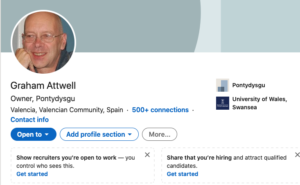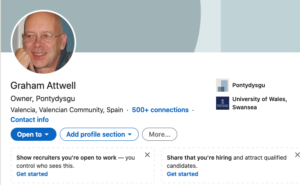Generative AI, Assessment and the Future of Jobs and Careers
Ten days ago, I was invited to make an online presentation as part of a series on AI for teachers and researchers in Kazakhstan. I talked with the organisers and they asked me if I could speak about AI and Assessment and AI and Careers. Two subjects seemed hard to me but I prepared presentation linking them together and somehow it made sense. The presentation was using a version of Zoom I had not seen before to enable interpretation. My slides were translated into Russian. This was a little stressful as I was changing the slides in Russian online and in English on a laptop at the same time. It was even more stressful that my TP Link to the internet went down after two minutes and I had to change room to get better connectivity!
Anyway, it seemed to go well and there were good questions from the audience of about 150. Given that the recording was in Russian, I made a new English version. We still experimenting with the best way to do an audio track over slide decks and provide a Spanish translation so sorry that some of these slides are not perfect. But I hope you get the message.




